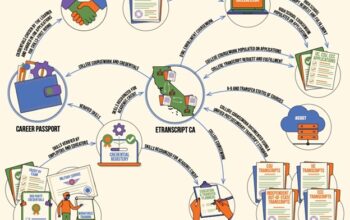This is an important story. It explains why we already have enough workers in this nation, legally, that we do not need illegal aliens or special visa’s to allow workers into this nation.
“And there a whole lot of Americans in the range between the homeless and the wealthy who are among those not working in the States.
I can think, in my own family, of a couple of college-educated women who retired early because of not needing earned income; of one working-age male who is supported by other family members, a part-time job, a live-in partner, and a disability pension; of others living off of savings, none working, all but one native-born. Further down the income ladder there are people of working age who are supported by family members, savings, part-time work, and our public welfare system, in various combinations.
We should get some-to-many of those Americans who are out of the labor market back to work, but it will not be easy. Forcing wage increases and more aggressive recruiting by limiting migration is a good place to start.”
We already have the workers—now we need to motivate them.
Why Getting Labor Market Dropouts to Work Is Difficult

But limiting immigration is a good place to start
By David North, Center for Immigration Studies, 8/16/23 https://cis.org/North/Why-Getting-Labor-Market-Dropouts-Work-Difficult
My colleague Steve Camarota frequently points out that the “need” for foreign workers is overstated by employers because America has a large number of working-age Americans who are neither working nor seeking work; he set that figure at 54.5 million in 2022.
His point – a good one – is that were employers to make a serious effort to recruit from that vast pool of workers, there would be no need for any overseas workers. Some in this group, of course, are college students and others are new mothers, but there are tens of millions of others whom employers could well draw into the job market, if sufficiently motivated to try. Many of them are men with less than a college education, a population that used to make major contributions to factory staffing.
I started thinking about this matter in broad terms the other day and am beginning to see what we as a nation are up against, why so many American employers would rather hire an alien than an American: it reflects a certain laziness and selfishness on the part of employers. In many cases it is much easier to hire a newly-arrived foreigner, often desperate for work, than it is to sort through potential American workers. At the same time, the foreigner is less demanding in terms of wages and working conditions, something that employers are unlikely to admit. It is a powerful combination of factors.
Then there is an apples-and-oranges comparison between the American and migrant work forces that comes with living in a prosperous country. Let’s face some not-very-cheerful facts about these two work forces. The migrants, though they may know nothing of this country and may not speak much English, as a population have been through a rugged screening process. Those abroad who are rich or lazy or disabled have largely been screened out by the migration process – they are unlikely to want wade across the Rio Grande.
But there is no screening process for the native-born; and we have a rather better support system for our people than is available in the Third World. So our employers face a choice, particularly at the bottom of the labor market, between a relatively elite and hungry group on one hand and a not-so-elite group on the other. Our government would rather look the other way than go to the trouble of doing what is needed to help our people who are out of the labor market to get back into it. (One way, of course, would be to actually enforce the immigration law.) This is exactly what Camarota is talking about.
With all that in mind let us look at the composition of the two work forces: those among the native-born who are out of the labor market on one hand, and the incoming migrants (legal and illegal) on the other. Let’s divide both groups into four categories:
- The coddled, by private and public welfare systems;
- The damaged, but viable. There are some who are both damaged and coddled;
- The permanently disabled, and;
- The majority who are neither damaged nor coddled.
Whereas the U.S. has a normal distribution of these populations, the migrant stream does not. Members of the House of Lords do not migrate, nor do beggars, nor do the lazy. One group has been screened by the migration process; the other group, the native-born, is unfiltered.
And there a whole lot of Americans in the range between the homeless and the wealthy who are among those not working in the States.
I can think, in my own family, of a couple of college-educated women who retired early because of not needing earned income; of one working-age male who is supported by other family members, a part-time job, a live-in partner, and a disability pension; of others living off of savings, none working, all but one native-born. Further down the income ladder there are people of working age who are supported by family members, savings, part-time work, and our public welfare system, in various combinations.
We should get some-to-many of those Americans who are out of the labor market back to work, but it will not be easy. Forcing wage increases and more aggressive recruiting by limiting migration is a good place to start.



